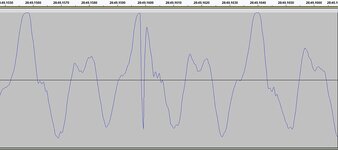Hey all, long time lurker, first time poster here! I recently bought the zoom live track l-20 and have encountered an issue. I've been tracking and ensuring levels are good , no clipping but still hot, and setting faders to unity gain. When I mix down on the l20 to the master 2 track the volume is fine when I play it back on the zoom.
I've then been taking the SD card from the zoom and loading the master way file into cubase on my laptop. When I open the file in cubase the waveform looks very small and the volume is very low. It seems like it's half the volume of the same wav file when I play it on the zoom. I'm matching the settings in cubase to that of the zoom, 44.1 k, 24 bit. Am I missing something?
The zoom has two different levels indicators...one on either side of the master fader. I've been setting the level to unity based on the left side level indicator...I'm guessing one side is for dbu and the other for dbfs?
Can't find it in the manual, so I'm hoping for some help from any of the gurus here.
Any help would be greatly appreciated. Thanks!
I've then been taking the SD card from the zoom and loading the master way file into cubase on my laptop. When I open the file in cubase the waveform looks very small and the volume is very low. It seems like it's half the volume of the same wav file when I play it on the zoom. I'm matching the settings in cubase to that of the zoom, 44.1 k, 24 bit. Am I missing something?
The zoom has two different levels indicators...one on either side of the master fader. I've been setting the level to unity based on the left side level indicator...I'm guessing one side is for dbu and the other for dbfs?
Can't find it in the manual, so I'm hoping for some help from any of the gurus here.
Any help would be greatly appreciated. Thanks!

